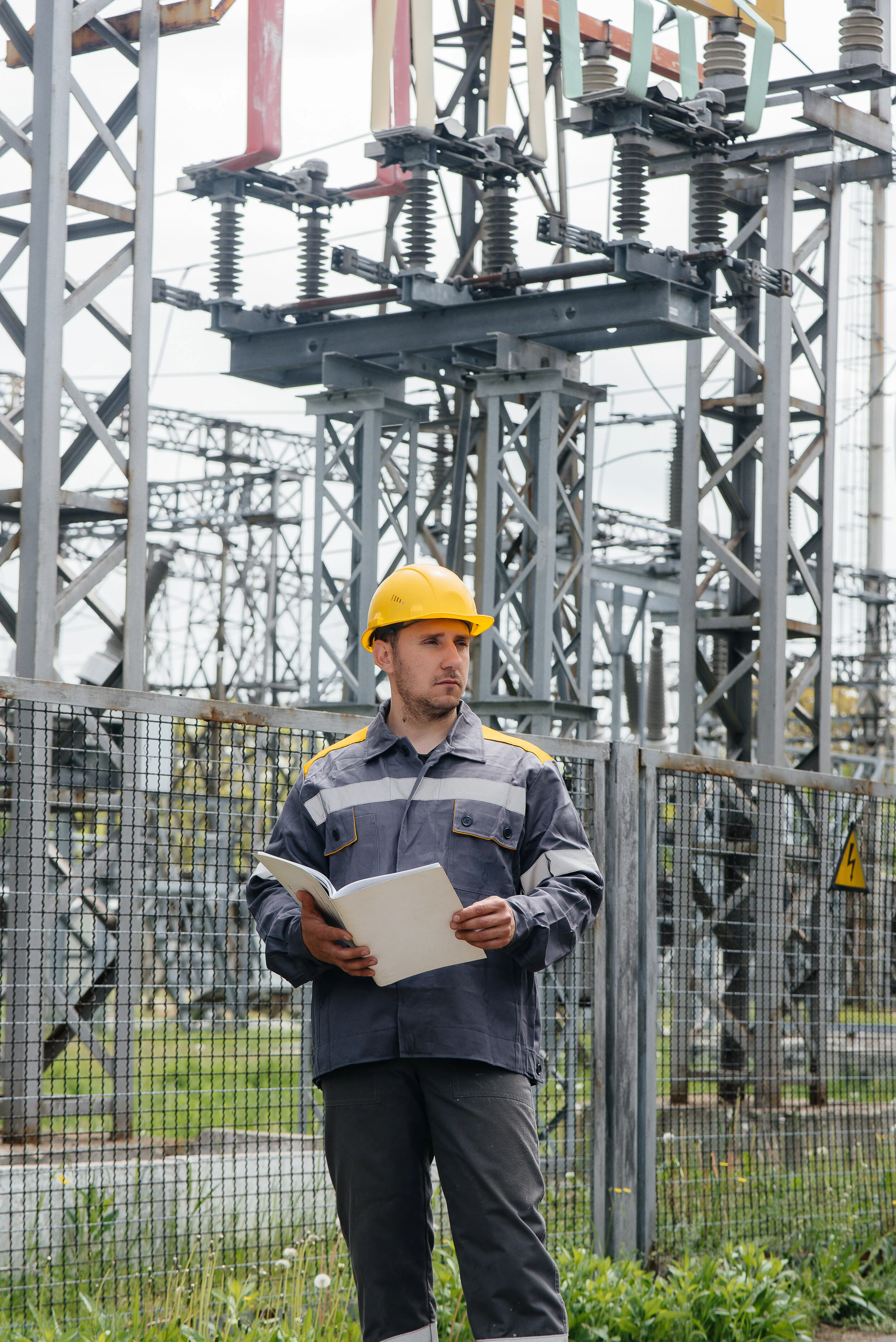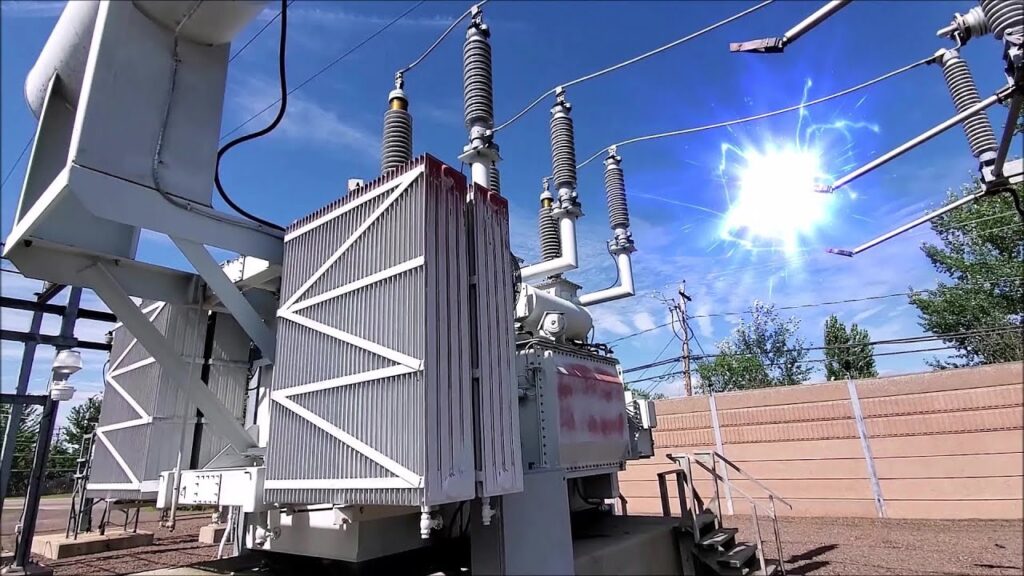Substations are vital to the power grid. They help transform electricity for safe use.
For linemen, working on substations is a challenging yet crucial task. These skilled professionals ensure that power flows smoothly from power plants to our homes and businesses. Their work requires a deep understanding of electrical systems, strict safety protocols, and precise coordination.
Substations are complex, housing transformers, switches, and other essential equipment. Linemen must be vigilant and detail-oriented to maintain and repair these structures. This introduction will explore the importance of substations, the skills needed by linemen, and the critical role they play in maintaining our electricity supply. Stay tuned to learn more about this fascinating and essential profession.
Importance Of Substations
The importance of substations in the power grid cannot be overstated. They play a crucial role in ensuring that electricity reaches our homes and businesses efficiently. Substations are essential for transforming voltage levels and distributing power safely.
Role In Energy Distribution
Substations convert high-voltage electricity from power plants to lower voltages. This makes it safe for household and commercial use. Without substations, the transmission of electricity over long distances would be inefficient. They also help manage the flow of electricity, ensuring a stable supply.
Impact On Reliability
Substations are critical for the reliability of the power grid. They minimize power outages by quickly isolating faults in the system. Substations also help in balancing the load across the network. This prevents overloading and ensures a continuous power supply. They are equipped with protective devices that safeguard the grid from damage. This makes the entire power system more robust and dependable.
Types Of Substations
Understanding the different types of substations is crucial for linemen. Each type has its own functions and structures. This knowledge helps in maintaining the power supply effectively. Let’s dive into the main types of substations.
Transmission Substations
Transmission substations are essential for power transfer over long distances. These substations connect two or more transmission lines. Their primary role is to step up or step down voltage levels.
Here are key components of transmission substations:
- Transformers: Increase or decrease voltage levels.
- Circuit breakers: Protect equipment by interrupting fault currents.
- Disconnect switches: Isolate parts of the substation for maintenance.
- Capacitors and reactors: Manage power flow and voltage levels.
These components work together to ensure efficient power transmission. Linemen must be familiar with each part to perform their tasks safely.
Distribution Substations
Distribution substations are crucial for delivering electricity to homes and businesses. They step down high-voltage power from transmission lines to a lower voltage. This lower voltage is suitable for end-users.
Key components of distribution substations include:
- Distribution transformers: Reduce voltage levels for local use.
- Switchgear: Controls the flow of electricity and protects the system.
- Busbars: Distribute power to multiple outgoing lines.
- Protective relays: Detect faults and trigger circuit breakers.
These substations ensure that electricity reaches consumers reliably. Linemen need to understand their layout and operation to manage outages and repairs.
In summary, transmission and distribution substations play vital roles in the power grid. Knowing the components and functions of each type is essential for any lineman. This knowledge enables them to perform their duties efficiently and safely.
Key Components
Substations are crucial in the electrical grid. They convert high-voltage electricity from power plants to lower voltages for homes and businesses. Linemen play a vital role in maintaining these substations. Understanding the key components is essential for efficient and safe operations.
Transformers
Transformers are a key part of substations. They change the voltage levels between circuits. High-voltage electricity from power plants is too strong for homes. Transformers reduce this voltage to safer levels. They can also increase voltage for long-distance transmission. Linemen must inspect and maintain transformers regularly. This ensures they operate efficiently and safely.
Circuit Breakers
Circuit breakers protect substations from electrical faults. They interrupt the flow of electricity during overloads or short circuits. This prevents damage to the system and keeps it safe. Linemen need to test and maintain these breakers. Proper maintenance helps avoid costly outages and ensures continuous power supply.

Credit: www.reddit.com
Safety Protocols
Working on substations is a high-risk job for linemen. Safety protocols are essential. They protect workers from injuries and fatalities. Following these protocols ensures a safe working environment. Let’s dive into some of the key safety measures.
Protective Equipment
Linemen must wear the right protective equipment. Hard hats protect against head injuries. Insulated gloves prevent electrical shocks. Safety glasses shield eyes from debris. Steel-toed boots protect feet from heavy objects. Flame-resistant clothing guards against burns.
Emergency Procedures
Emergency procedures are vital in substations. Linemen must know what to do in an emergency. Quick response can save lives. First, identify the emergency. Then, follow the pre-established steps. Evacuate if necessary. Contact emergency services immediately. Always have a first aid kit on site. Regular drills keep everyone prepared.
Maintenance Procedures
Substations are vital for the power supply network. Regular maintenance ensures they operate efficiently. Linemen play a crucial role in maintaining these substations. This section covers the essential maintenance procedures linemen follow. It includes routine inspections and fault detection.
Routine Inspections
Routine inspections are vital for identifying potential issues early. Linemen conduct regular checks on all substation components. They examine transformers, circuit breakers, and other equipment.
Here are the steps involved in routine inspections:
- Visual inspection of all equipment
- Checking for any signs of wear and tear
- Ensuring all connections are secure
- Testing insulation resistance
- Recording any abnormalities
A detailed checklist helps linemen during these inspections. Regular inspections prevent major faults and ensure reliability.
Fault Detection
Detecting faults early is crucial. It prevents extensive damage and power outages. Linemen use various tools and techniques for fault detection.
Here are some fault detection methods:
- Thermographic inspections to detect hot spots
- Ultrasonic testing to identify electrical discharges
- Partial discharge testing to locate insulation faults
- Using specialized software for real-time monitoring
Early fault detection ensures timely repairs. It enhances the lifespan of substation equipment. Linemen’s expertise is crucial for effective fault detection.
Maintaining substations is a continuous process. Routine inspections and fault detection are essential for smooth operation. Linemen’s role in these procedures is invaluable.
Technological Advancements
The power industry is evolving rapidly. Linemen working on substations experience these changes firsthand. Technological advancements have brought about significant improvements. Two key areas are smart grids and automation. These innovations make the work more efficient and safer.
Smart Grids
Smart grids are an essential part of modern substations. They use digital technology to manage electricity flow. This allows for better monitoring and control. With smart grids, linemen can pinpoint issues quickly. They can also reroute power to avoid outages.
Some key benefits of smart grids include:
- Improved reliability
- Enhanced security
- Better integration of renewable energy
These benefits lead to fewer power disruptions. They also help in maintaining a stable power supply. Smart grids are transforming the way substations operate. Linemen need to adapt to these new technologies. Continuous learning is crucial.
Automation
Automation is another significant advancement in substations. It involves using automated systems to control electrical equipment. This reduces the need for manual intervention. Linemen can focus on more complex tasks.
Automation includes:
- Remote monitoring
- Automatic fault detection
- Self-healing networks
These systems improve efficiency and safety. Automated systems can detect and fix issues faster than humans. This minimizes downtime and enhances service reliability. Linemen must be familiar with these systems. They need to understand how to operate and maintain them.
In conclusion, technological advancements like smart grids and automation are reshaping the power industry. Linemen working on substations must stay updated with these changes. This ensures they can perform their tasks effectively and safely.
Challenges In Substation Work
Working on substations presents many challenges. Each lineman must navigate tough conditions and aging equipment. These factors make the job both demanding and dangerous. Let’s explore some of these challenges in detail.
Weather Conditions
Weather is a significant challenge in substation work. Linemen often work outdoors, exposed to extreme elements. From scorching heat to freezing cold, the weather can vary widely.
Thunderstorms pose a great risk. Lightning strikes and heavy rain can lead to hazardous conditions. High winds can make it hard to handle equipment safely. Snow and ice can also create slippery surfaces.
These weather conditions demand high levels of alertness. Linemen must take extra precautions to avoid accidents. Proper gear and safety measures are essential.
Aging Infrastructure
Another challenge is dealing with aging infrastructure. Many substations have been in service for decades. The old equipment can be unreliable and prone to failure.
Regular maintenance is crucial. Linemen must inspect and repair outdated components. This work can be complex and time-consuming. Sometimes, it is hard to find replacement parts for old systems.
Modernizing these systems is necessary but costly. Transitioning to new technology requires careful planning and execution. Despite the challenges, linemen strive to keep the power grid functional and safe.

Credit: www.centextraining.com
Training And Certification
Training and certification are crucial for linemen working on substations. These help ensure safety and efficiency. Proper training prepares linemen for the unique challenges of substation work. Certification validates their skills and knowledge.
Skill Development
Skill development is the foundation of a lineman’s career. It starts with basic electrical knowledge. Linemen learn about circuits, transformers, and safety protocols. Hands-on training is essential. It includes climbing poles and working with live wires. Advanced training covers substation-specific tasks. These tasks include equipment maintenance and troubleshooting. Practical exercises reinforce theoretical knowledge.
Certification Programs
Certification programs validate a lineman’s expertise. They are often required by employers. Programs vary by region and organization. Some focus on general lineman skills. Others specialize in substation work. Certification involves passing written and practical exams. Continuous education is important. It ensures linemen stay updated on the latest practices. Certified linemen are more likely to secure good jobs.
Frequently Asked Questions
What Is A Substation In Lineman Work?
A substation is a key part of the electrical grid. It steps down high voltage electricity to lower levels. Linemen work on these to ensure reliable power distribution.
What Do Linemen Do At Substations?
Linemen maintain, repair, and inspect substations. They ensure all equipment functions correctly and safely. Their work prevents power outages and ensures efficient electricity flow.
How Do Linemen Ensure Safety At Substations?
Linemen follow strict safety protocols and wear protective gear. They regularly inspect and maintain equipment. Training on the latest safety standards is continuous.
What Tools Do Linemen Use At Substations?
Linemen use a variety of tools including insulated pliers, voltage testers, and climbing gear. They also use specialized equipment for high-voltage work.
Conclusion
Working on substations as a lineman requires skill and dedication. Safety is always the top priority. Proper training and equipment are essential. Every task needs careful planning and execution. Teamwork plays a crucial role in successful operations. Linemen ensure the power grid remains reliable and efficient.
Their hard work keeps our lights on. It’s a challenging but rewarding career. Remember to always stay updated with the latest techniques. This helps maintain safety and efficiency. Linemen are truly the backbone of our electrical systems.


